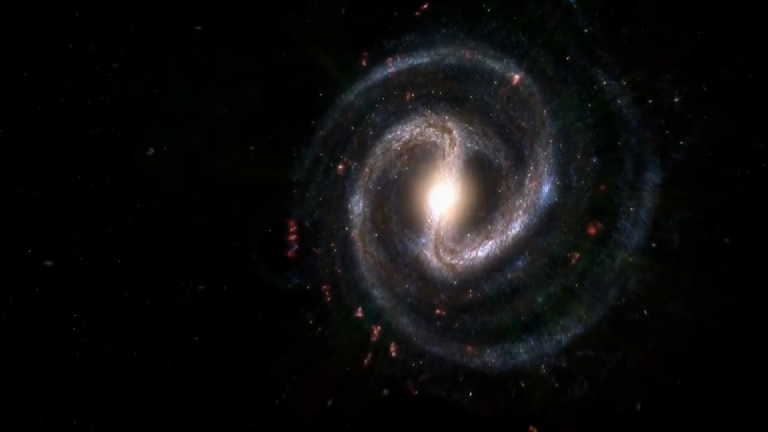The Milky Way is dying, and experts are investigating what’s killing it.
How is the universe put together? How is it built? And how does it actually work?
Science’s hit space series will blow your mind by answering how the universe started and how it will end – and everything in between. Learn how nuclear fusion keeps them burning for billions of years and what powers our nearest star: the sun. The inner workings of outer space will be revealed as modern astronomy helps to demystify a series of unusual phenomena.
Milky Way
The Milky Way is the galaxy that contains our Solar System. The descriptive “milky” is derived from the appearance from Earth of the galaxy – a band of light seen in the night sky formed from stars that cannot be individually distinguished by the naked eye. The term Milky Way is a translation of the Latin via lactea, from the Greek galaxías kýklos, “milky circle”. From Earth, the Milky Way appears as a band because its disk-shaped structure is viewed from within. Galileo Galilei first resolved the band of light into individual stars with his telescope in 1610. Until the early 1920s, most astronomers thought that the galaxy contained all the stars in the Universe. Following the 1920 Great Debate between the astronomers Harlow Shapley and Heber Curtis, observations by Edwin Hubble showed that the Milky Way is just one of many galaxies.
The galaxy is a barred spiral galaxy with a diameter between 100,000 and 180,000 light-years (ly). The galaxy is estimated to contain 100–400 billion stars. There are probably at least 100 billion planets in the Milky Way. The Solar System is located within the disk, about 26,000 light-years from the Galactic Center, on the inner edge of the Orion Arm, one of the spiral-shaped concentrations of gas and dust. The stars in the inner ≈10,000 light-years form a bulge and one or more bars that radiate from the bulge. The very center is marked by an intense radio source, named Sagittarius A*, which is likely to be a super massive black hole.
